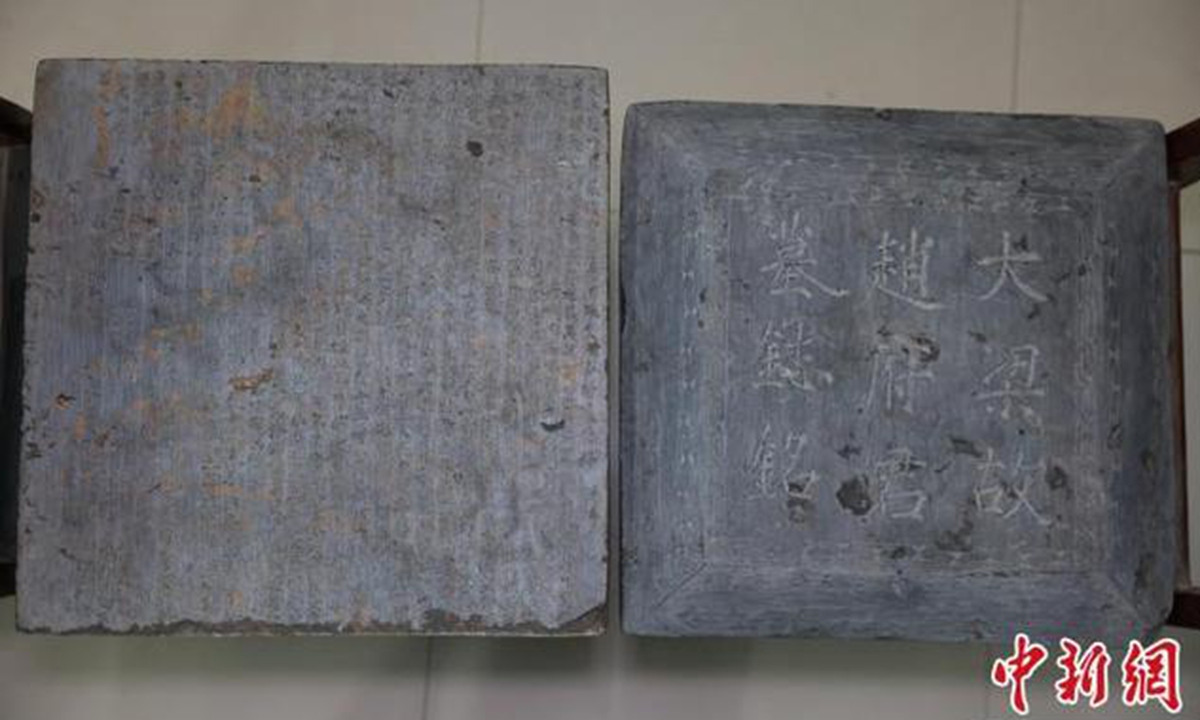
Photo: China News Service
A 1,116-year-old ancient tomb was recently discovered in Xinhe county, North China's Hebei Province, providing significant insight into the cultural practices of the Later Liang Dynasty (907-923), Xinhua News Agency reported.
According to the report, Zhao Shimin, director of the local cultural heritage protection office, noted that the discovery marks the first-ever discovery of artifacts from the Later Liang in the region.
"The tomb epitaph contains detailed records, offering valuable references for understanding the cultural heritage and funeral customs of the Later Liang Dynasty. Moreover, it serves as historical evidence for studying the geographical evolution of Xinhe county," he said.
The ancient tomb came to light when local construction workers were carrying out dredging work in a nearby river channel. The epitaph on the tomb indicates that it was engraved 1,116 years ago.
Oriented north to south, the tomb is comprised of a round domed structure with a burial chamber. While the upper part of the burial chamber is missing, the lower section is relatively complete. The walls on both sides of the coffin bed are adorned with brick doors imitating wooden structures. To the south of the coffin bed, there is a well-preserved epitaph consisting of two pieces: a lid and a stone tablet.
The lid bears the inscription "Epitaph of Zhao Fujun from Da Liang." The stone tablet is 44.5 centimeters long, 45 centimeters wide, and 8 centimeters high. Over 640 characters in length, the epitaph displays an elegant writing style and a harmonious rhyming scheme.
According to the epitaph, the tomb's owner, surnamed Zhao, hailed from Tianshui, Northwest China's Gansu Province. One of his ancestors held prestigious positions during the Jin Dynasty (317-420), then later generations of the family migrated to today's Xinhe county.
During the excavation and cleaning of the ancient tomb, archaeologists also discovered fragments of a white porcelain bowl.
This is not the first tomb to be discovered recently in Hebei Province.
In June, seven well-preserved ancient tombs from the Tang Dynasty (618-907) were unearthed at a construction site in Handan, Hebei. These ancient tombs, dating back 1,100 years and possessing significant research value, prompted experts to initiate immediate archaeological excavations. In 2022, more than 460 ancient tombs along with 400 cultural relics were discovered during an archaeological excavation in Handan.




